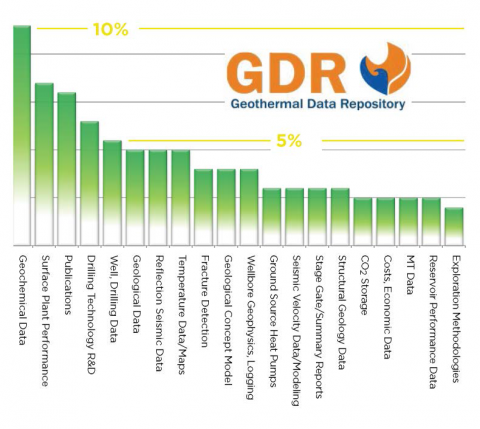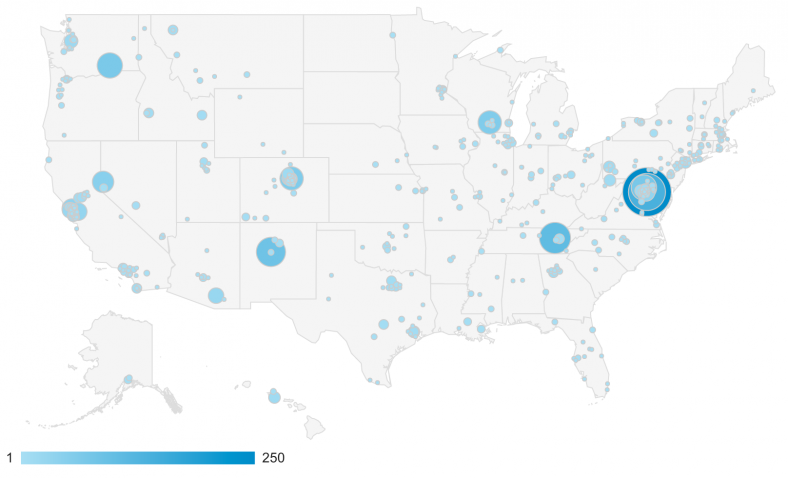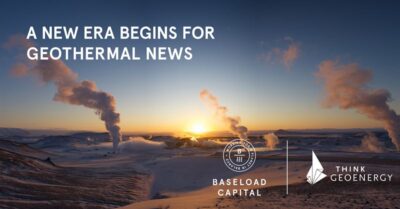US DOE Geothermal Data Repository growing with 500th submission
The Geothermal Technologies Office deployed the GDR to store all of the data collected from office-funded projects, but also to help accelerate the research and development of geothermal energy.
July 15 marked an important milestone for the Energy Department’s Geothermal Data Repository (GDR), as the online geoscience tool received its 500th submission since its launch in March 2012. The Geothermal Technologies Office (GTO) deployed the GDR to store all of the data collected from office-funded projects, but also to help accelerate the research and development of geothermal energy resources by providing researchers, academia, and industry with access to this project information. The GDR is one of many members of the Energy Department’s National Geothermal Data System (NGDS), which provides free access to millions of records of geothermal research and site demonstration data.
The GDR’s 500th submission came from Carnegie Mellon University and is a structured, high-quality data set containing the results of experiments on the effectiveness of materials to separate rare earth metals from geothermal brine—the mixture of water and dissolved minerals extracted from geothermal sites. Close on its heels was the 501st submission from the private company SRI International, with data showing the effectiveness of polymers to do the same with lithium and manganese. Both the Carnegie Mellon and SRI International research projects received funding from GTO’s Strategic Materials program. If successful, these methods not only will help make geothermal a source of sustainable energy, but also rare earth elements and other minerals crucial to today’s technology.
All projects receiving GTO funding upload their raw data—ranging from well and drilling data to tested exploration methodologies—to the GDR. Ensuring access to the data is not just about uploading it to a data repository; it’s about making the data useful to others in way that will foster innovation and promote further scientific discovery. This practice not only complies with the White House’s open data policy, but also goes a step further by making the data part of the NGDS and other data catalogues, such as OpenEI and Data.gov, providing a resource that is useful for the broader geothermal industry and scientific community. The 500th submission is also special because it is formatted to fit an NGDS Data Exchange Model, which makes it interoperable with other data in the repository. This is the highest quality recommended by the GDR, known as a Tier III Submission. Additional information pertaining to the data quality and format used for the 500th submission may be found on the Mineral Recovery Brines page of the NGDS.

The GDR accepts many different types of data useful to the geothermal community, as illustrated by the data categories in the image. Credit: Jon Weers, NREL.
On its own, the GDR had 1,038 direct downloads between July 1, 2014, and June 30, 2015. However, files hosted on the GDR were downloaded more than 11,300 times during that period from users accessing the data through GDR’s open data partner sites. Members of the geothermal industry are not only contributing to the GDR, but the contributed data is providing tangible value to the entire geothermal community. Schlumberger, a global industry leader serving the oil and gas sectors, for example, was able to make better drilling decisions because of raw temperature data supplied to the NGDS.
The GDR, along with the NGDS and other open source databases, are helping increase the deployment of geothermal energy in the United States, which will play a vital role in helping reach the goals outlined in the recently announced Clean Power Plan.
Source: Press Release by the US DOE


















